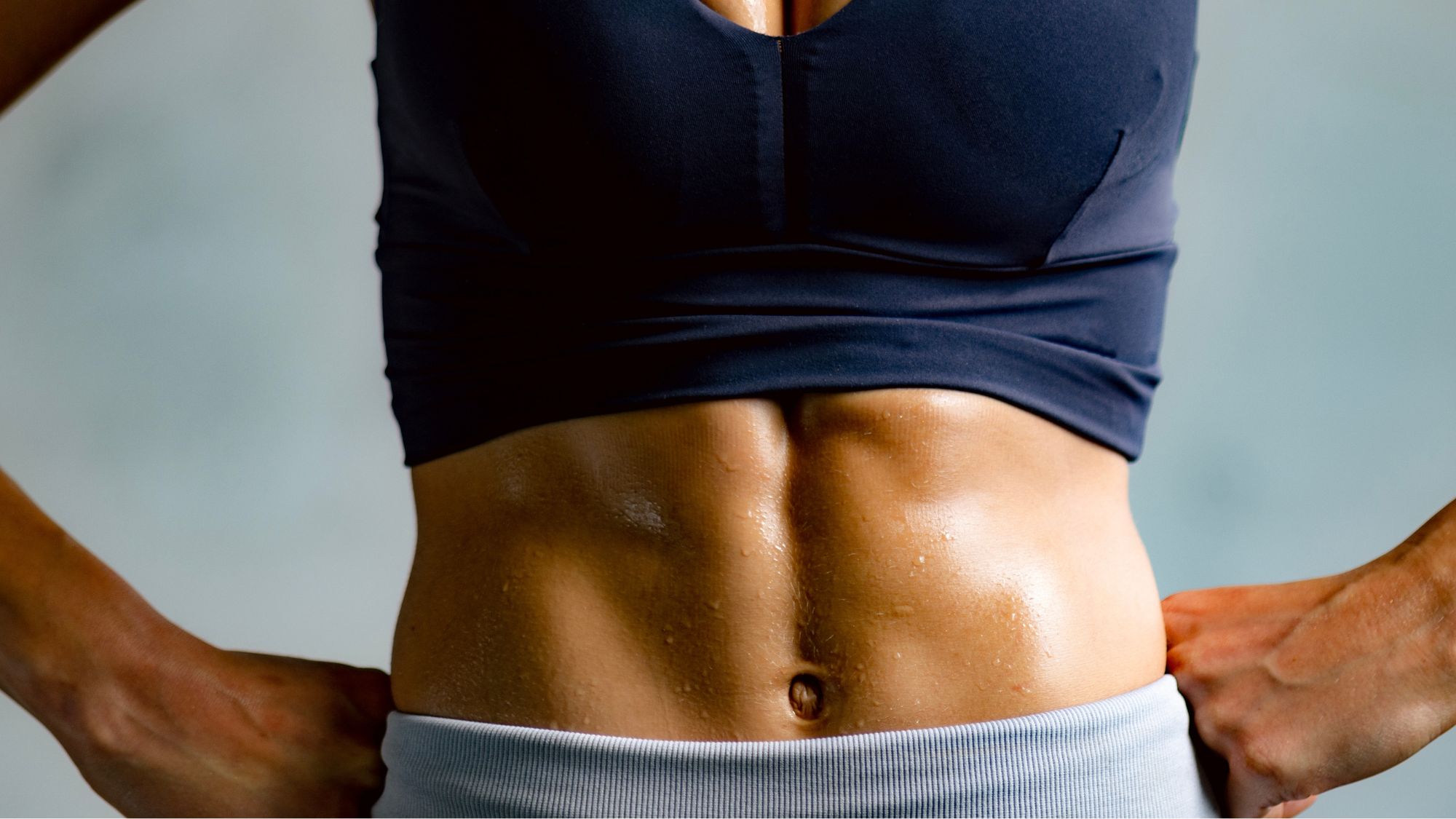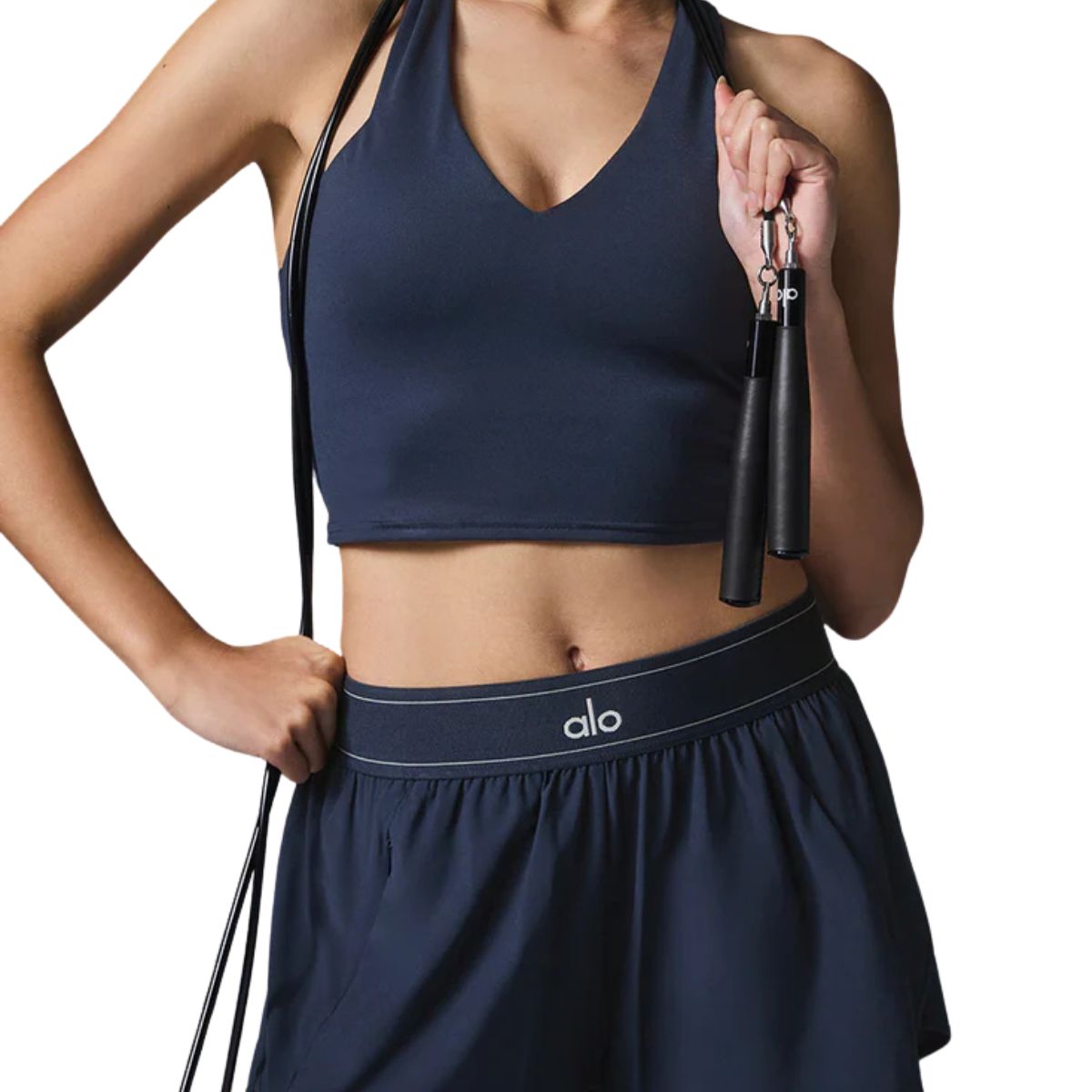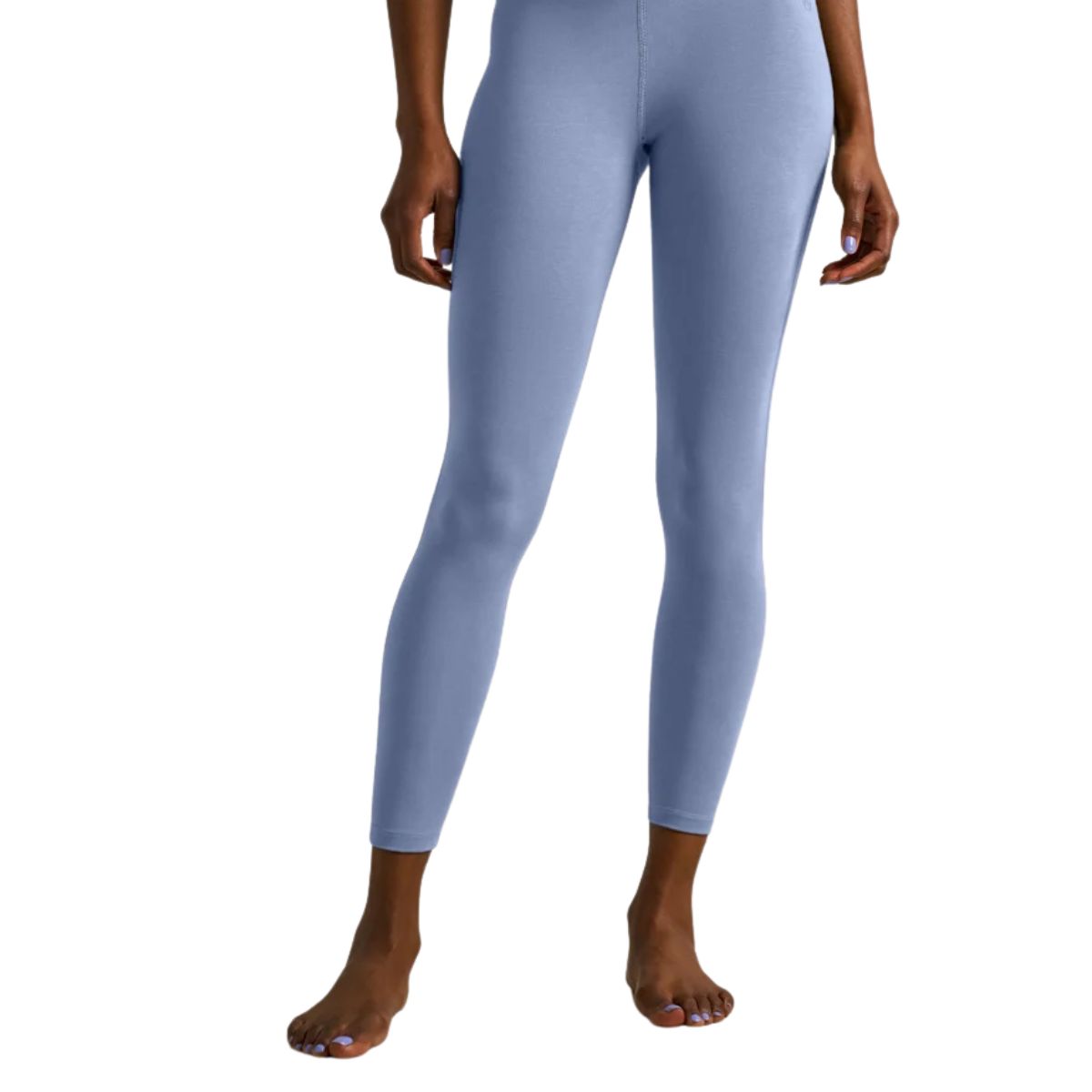Deep Core Exercises Are Everywhere RN, Promising To Be the Most Effective Way To Train Your Abs – 9 for a Defined Midsection
New core level, unlocked.


Training your core on repeat to reap all the benefits of a strong midsection, yet you're still not feeling as defined or powerful as you'd like to be? Then you're in the right place.
We're forever talking about working out our abs and obliques, but there's another aspect to core strength that rarely gets a look in: the deep core. Yes, we're talking about way more than just your superficial abs now. If you want to build a strong core for life (and who doesn't want that?) then you need to be engaging and working your deep core muscles regularly.
A quick biology lesson, here: we have two kinds of core muscles, our "mover" muscles, which power our big movements (think obliques, hip flexors and rectus abdominis) and "stabiliser" muscles, which work to control the movements and stabilise the body.
These are the deep core muscles, and are integral to posture, balance and movement, as well as supporting the spine and holding our organs in place.
"Your deep core is your foundation," agrees Catie Miller, fitness trainer and founder of Barre Series. "It supports your balance, alignment, and overall strength. When activated properly, it not only helps to protect against injury but also enhances your performance in every other area — whether you're lifting your child, flowing through a barre class, or simply walking up the stairs."
As for the benefits of training your deep core specifically, research (like this study, published in the Journal of Physical Therapy Science) confirms that working out the deep abdominals is effective in improving stability and posture in athletes - a benefit that extends to all of us, no matter our physical prowess.
With this in mind, we've asked top coaches for their favourite deep core moves that you can try today - and the best bit? You're probably already doing them. Keep scrolling to find out more, but while you're here, do check out our guides to the best home core workouts, the benefits of a strong core, the best core activations, and the core exercises trainers do themselves on repeat, here.
Celebrity news, beauty, fashion advice, and fascinating features, delivered straight to your inbox!
Deep core exercises are the most effective way to train your abs - here are the moves that coaches do on repeat
What are deep core exercises?
We've touched briefly on what the deep core is above, but what kind of moves are we talking about, here? Well, essentially, we mean training those muscles below the superficial abs.
"Deep core exercises focus on strengthening the muscles beneath the surface - the stabilising layer of your core that includes the transverse abdominis, pelvic floor, diaphragm, and multifidus," explains Miller. "These muscles work together like an internal corset, offering support for your spine, posture, and everyday movements."
Hate crunches? Don't look away now: one of the great things about the deep core is that you don't have to spend hours in the gym to activate it, you can even do the work while standing at your desk, or driving to work. It's not all about intense ab work, it's more about subtle muscle engagement - Miller describes it as a "drawing in and up through your centre — almost like zipping up a tight pair of jeans from the pubic bone to the belly button. It’s subtle, not forceful," she tells MC UK. "When the deep core is activated correctly, your ribs stay soft, you can still breathe naturally, and your pelvic floor gently lifts."
What are the benefits of deep core exercises?
We know that a strong and stable core carries with it a myriad of both physical and real-world benefits. From improved balance and posture to reduced lower back pain and even improved athletic performance, the advantages of a defined midsection extend way beyond aesthetics.
While it's important to note here that it's impossible to 'spot train' a particular area, doing targeted deep core work will improve deep core support and stability, and bring with it its own benefits, over and above the usual core strength gains.
1. Improved posture and spinal alignment
"Deep core muscles are crucial for maintaining spinal stability, supporting posture, and enabling efficient movement," notes Rowan Clift, training and nutrition specialist at AI-based fitness and lifestyle coaching app Freeletics. "These muscles form a stabilising unit that wraps around your spine and organs like a natural corset. When these muscles are strong and engaged, they create intra-abdominal pressure that protects your spine and transfers force effectively between your upper and lower body."
2. Enhanced balance and body awareness
You know the shakes you get when you're holding a plank? That's those tiny, all-important stabilising deep core muscles at work, striving to maintain your balance and support your body. And it's not just static holds that gain, either.
"Strengthening the deep core muscles improves your ability to balance and stabilise in dynamic movements, too," notes Clift.
3. Reduced risk of lower back pain or injury
"Without proper deep core function, you're more likely to compensate with superficial muscles or strain the back, hips, or pelvis during exercise and daily tasks," says Clift. "Athletically, a well-functioning deep core allows you to run faster, lift heavier, and move more efficiently, reducing the risk of injury."
4. Better breath control and pelvic floor health
You'd be forgiven for thinking that breathing has little to do with core strength - but you'd also be mistaken. A strong deep core means more efficient breathing mechanics, as well as improved pelvic floor health, too.
"Deep core exercises are movements designed to engage the inner layer of abdominal muscles, primarily the transversus abdominis (TVA), pelvic floor and diaphragm," explains Pilates instructor Aleksandra Warburton. "When strong and active, these muscles help prevent injury, improve balance, support spinal alignment, and even improve the way we breathe. They also enhance pelvic floor health, which is key for postnatal recovery, prenatal support, and even peri and postmenopausal wellbeing."
5. Greater connection to your overall movement and stability
"Deep core muscles are vital because they're your body's foundational support system," shares personal trainer Emma McCaffrey. "While superficial muscles move you, deep core muscles stabilise you. They act as a natural brace, protecting your spine during movement, efficiently transferring force, and maintaining good posture. A weak deep core often leads to back pain and injury."
How to activate your deep core
Given the fact that we can move through life largely unaware of engaging our deep core muscles, a crucial question has to be, how can we tell if we're doing deep core exercises right?
"It can be tricky and subtle at first to identify correct activation of the deep core," notes Warburton. "Lots of people don't quite know the sensation or how to accurately engage their core. You should feel a sense of gentle drawing in or wrapping around your waist, as though you’re tightening a corset or zipping up a tight pair of jeans.
"The belly may flatten slightly without “gripping” or pushing out, and you should still be able to breathe naturally. In Pilates, this is often referred to as scooping the abdominals (or sinking the belly button down to the spine), and when paired with good alignment and breath control, it becomes second nature over time. Again when this is mastered you will be able to practice 'lateral thoracic breathing' which means breathing into the sides and backs of the lungs with the core maintaining engaged."
Got it? Good!
9 best deep core exercises for a defined midsection, according to top coaches
1. Dead bugs
What? A classic Pilates move. To perform a Dead Bug, lie on your back with arms extended toward the ceiling and knees bent at 90 degrees. Engage your core and slowly extend one arm and the opposite leg toward the floor. Keep your lower back pressed into the ground. Return to the start and repeat on the other side.
Why? "The dead bug is one of the best exercises for core stability and coordination," says Clift. "It teaches your body how to brace while moving your limbs, a key movement pattern in running, lifting, and everyday life."
How long for? Aim for three sets of six to 10 reps per side.
2. Bird dogs
What? Another Pilates powerhouse, a bird dog is essentially a dead bug, performed on all fours instead.
Why? "This move trains core control and spinal stability in a more functional, upright position," says Clift. "It activates the transverse abdominis and deep back muscles while promoting balance and coordination."
How long for? Clift recommends three sets of eight to 10 slow reps per side.

3. Heel slides
What? Lie on your back with knees bent, and inhale to prepare. As you exhale, engage your TVA and slide one heel away along the floor. Keep hips and spine stable. Inhale to return. Alternate legs.
Why? Controlling the breath and pelvic floor while moving is the key to this move. "While engaging these muscles you should be able to still breathe and talk," says personal trainer Emma Bord, "absolutely no holding of your breath! In addition, your spine will stay neutral and relaxed, not arching or off the floor."
How long for? Aim for three slides on each leg, with control.
4. The Pilates Hundred
What? The Hundred is one of the most iconic classical Pilates exercises. Lie supine on the floor, and gently draw your legs up to 90 degrees. Lifting the head and neck, pulse your arms up and down for 100 breaths.
Why? "It builds endurance in the deep core and warms up the entire body," says Warburton. "The pulsing arms and breath pattern encourage deep abdominal engagement and pelvic floor activation."
How long for? Aim for 10 breath cycles (inhale for 5, exhale for 5).
5. Pilates teaser
What? An advanced Pilates move, the teaser requires you to line both legs and body up into an iconic V shape and hold.
Why? "The teaser is a full-body movement that requires serious control from the deep abdominals to articulate the spine and balance the body," notes Warburton. "It’s challenging, but brilliant for developing strength through the centre, or powerhouse."
How long for? Start with three to five reps, increasing as you gain strength.
6. Forearm plank
What? A standard forearm plank, but with controlled breathing. In a forearm plank, engage your core, squeeze your glutes, and breathe slowly. On each exhale, gently draw your navel toward your spine to activate your deep core.
Why? " A standard plank becomes a deep core exercise when paired with slow, diaphragmatic breathing," says Clift. "It enhances endurance in the transverse abdominis and builds whole-body tension."
How long for? Clift suggests three sets of 30 to 45 seconds with full control.
7. Glute bridge march
What? To perform, lie on your back, feet flat, and lift your hips into a glute bridge. Keeping hips level, lift one knee toward your chest, then lower and switch.
Why? "This combines posterior chain activation with deep core stability," says Clift. "The glute bridge march challenges your ability to stabilise your pelvis while one leg moves, key for runners and lifters."
How long for? Try three sets of eight marches per side.
8. Hollow body hold
What? To perform, lie on your back with arms and legs extended. Lift your shoulders and legs off the ground to form a shallow ‘dish’ shape.
Why? "This is an advanced bodyweight move that works to build maximum core tension and train the entire anterior chain, including the deep core," says Clift.
How long for? Start with a 15 to 20 second hold and build up to 45 to 60 seconds, advises Clift.
9. Diaphragmatic breathing with TVA activation
What? Lie on your back with your knees bent and feet flat. Inhale through your nose into your belly and feel it rise. As you exhale through your mouth, gently draw your belly in towards your spine and lift your pelvic floor (as if you are stopping yourself from doing a wee!)
Why? "This is a great way to connect your breath with your pelvic floor," says Bord. "And the best bit? You don’t even need to be in gym clothes!"
How long for? Hold for three to five seconds and release. Repeat three times.
Shop MC UK's go-to core strength essential kit now:
Are deep core exercises suitable for beginners?
In a word: definitely. "Beginners should absolutely do deep core exercises - or indeed anyone returning to exercise after having a break," notes Bord. "Deep core exercises are gentle and safe and provide a great basis on which to move forward safely with more intense exercise. Ideally, you should aim to perform them between three and five times a week, even if just for five or 10 minutes.
"They may be included as part of a warm-up, or indeed mixed into other parts of your workout. In fact you can actually perform this without specifically ‘working out’. They can be done anywhere at any time of day and are a great way to connect with your body and breath."

Anna Bartter is a freelance journalist who writes about health, fitness and women's lifestyle for publications including Stylist, Metro and Psychologies, among others.
She's always on a quest to find a variety of fun and functional workouts that give you the most bang for your workout buck and she's passionate about championing movement for everyone's mental and physical wellbeing.











